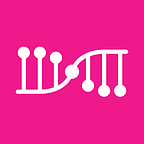Darwinia 2.0 Merge Overview
After publishing the article Darwinia 2.0 Will Upgrade Staking Module, we received some feedback from the community. In that article, we learned that the upgrade of the staking module stems from the merging of Darwinia chains. In this article, we will introduce the purpose of the merge, what will remain the same and what will change after the merge.
Why The Merge?
To reduce the complexity of the Darwinia Network. The Darwinia core network includes 6 chains: Darwinia Chain, Darwinia Smart Chain(also known as the EVM module of Darwinia Chain), Darwinia Parachain, Crab Chain, Crab Smart Chain, and Crab Parachain. The first three belong to the Darwinia Mainnet, and the latter three belong to the Darwinia Canary Network.
The following figure shows the Darwinia Network infrastructure before the merge:
This design was accepted at that time because the technology was immature, besides there would be many problems in the joining and quitting parachains. Therefore, Darwinia Network separated the responsibilities of the parachain from the solo chain(Darwinia Chain and Crab Chain) and worked independently. The parachain's governance is done through remote governance on the Darwinia Chain. This approach did solve the problem at the time.
However, this confused many users, and also brought a lot misunderstandings to application developers. Not only that, but the six chains also slowed down the development progress of the core team. The core development team needs to consider the development of the six chains at the same time. The governance is also complicated. The governance of the parachain needs to be reached through a cross-chain procedure. In addition to that, during cross-chain, because of one more hop, cross-chain time and cost are all increased.
With the maturity of the technology, the Darwinia dev team is ready to solve this problem. After conducting a feasibility research, the team decided to merge the Darwinia Chain, Darwinia Smart Chain and Darwinia Parachain, and of course, include the merging of Crab Chain, Crab Smart Chain and Crab Parachain. The goal is to simplify the Darwinia cross-chain network and reduce cross-chain time and cross-chain fee.
After The Merge
The Darwinia Chain, Darwinia Smart Chain(also known as the EVM module of Darwinia Chain), and Darwinia Parachain will be merged into one chain. The name of the merged chain will be Darwinia, which will be secured by the shared security of Polkadot as a parachain. And, the Crab Chain and Crab Parachain will be merged into one chain named Crab, which will be secured by the shared security of Kusama as a parachain.
The following figure shows the Darwinia Network infrastructure after the merge:
Changes In Cross-Chain Path
After the merge, the most intuitive change is that there will be one less hop in the Darwinia cross-chain network.
For example, the original path of Moonbeam <> Darwinia Parachain <> Darwinia Chain <> Ethereum will become Moonbeam <> Darwinia <> Ethereum. This one hop will be reduced on all paths through the Darwinian cross-chain network.
More importantly, all cross-chain applications based on the Darwinia cross-chain network will be simplified. And the application users will pay less for a more effective cross-chain service.
Inflation Model Unchanged
After the merge, the economic model of the Darwinia Network will be unchanged, which means that the block reward will remain the same, that is to say that the inflation rate will still remain the same.
User Assets Unchanged
Once merged, since the Darwinia Chain is the Polkadot parachain, and the Crab Chain is the Kusama parachain, their economic and consensus security will be guaranteed by Polkadot and Kusama respectively, so the Darwinia Chain and Crab Chain validators will not be needed.
The original validator’s work of collecting transactions and producing blocks will be taken over by collators.
The responsibility of the collators will be relatively small but also important. So collators will also need to apply through a bond. Collators, like validators, will receive rewards from producing blocks, but their proportion will be smaller as the responsibility has become smaller. This reward ratio will ultimately be determined by the market. And, token holders can still earn rewards by nominating collators.
Staking Adjustment
After removing the validators and the addition of collators, the staking model will be adjusted accordingly.
After the research, technically, it turns out that using the original staking pallet is too complicated and not suitable for parachain staking. So a new simplified staking module is needed. At present, the dev team is still doing some more technical research.
In addition, some adjustments will be made to the staking model. Because the responsibility of collators will be reduced. Collators are not responsible for securing the entire Darwinia Network, therefore, require less staking. And therefore, the proportion of the collator’s block reward may also be reduced accordingly, and this proportion may finally need to be answered by the market.
Because the number of collators may be less than that of validators, the reward obtained by a collator may not drop sharply. It is difficult to estimate the final reward obtained by each collator.
Related Reading
- Technical Feasibility Research and Test for Merging Solo Chain and Parachain
- Darwinia 2.0 Will Upgrade Staking Module, Which Allows Users To Earn Staking Rewards Via Nominating Collator
- How To Understand The Three Types Of Chains In The Darwinia Network
About Darwinia Network
GitHub | Website | Medium | Twitter | Telegram | Discord
Darwinia is a cross-chain messaging infrastructure, which provides a light client-based, programmable, universal cross-chain messaging network for decentralized applications. Now, we’ve successfully used Darwinia’s light-client cross-chain messaging protocol(LCMP) to bridge cross-chain messages between substrate-based chains, and even between substrate-based chains and EVM chains, meanwhile, Darwinia provides developers with an SDK, so they can easily integrate cross-chain capabilities into their Dapps. This will have profound implications for cross-chain interoperability, and Darwinia as a cross-chain messaging infrastructure will facilitate the building of a hybrid cross-chain network.
